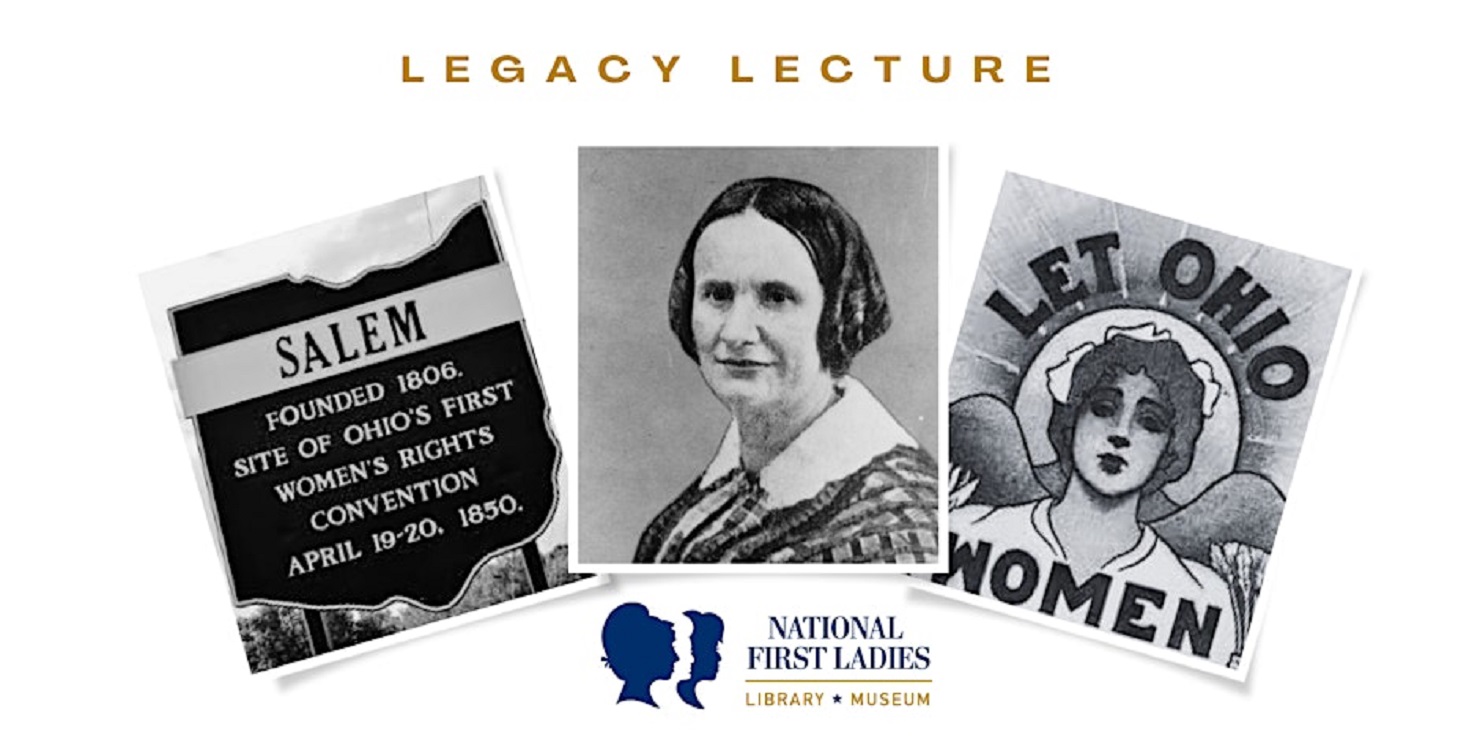 August 9, 2024
August 9, 2024
Online Lecture
Many of us were taught the US women’s rights movement began with a convention in Seneca Falls, New York in 1848. While this gathering was an important catalyst, this program will explain how it was a convention held in Salem, Ohio two years later that took the movement to a whole new level, from a local gathering to a statewide effort.
The Salem convention was of historical consequence for many reasons, including the fact it was the first where the planners, officers, and speakers were exclusively women. Suffragist Paulina Wright Davis later reminisced: “Never did men so suffer! Not a man was allowed to sit on the platform, to vote . . . . If one rose meekly to make a suggestion, he was at once ruled out of order.” In fact, Ohio suffragists were the “first ladies” not only to run their own convention, but also to file a petition for women’s suffrage with a governmental body, to generate the first constitutional debate about women’s enfranchisement in the county, and to create the first statewide women’s rights organization.
The contributions of the state of Ohio to the national women’s rights movement have been overlooked for too long. None other than Gerda Lerner, often considered the pioneer of women’s history as an academic discipline, argued Ohio in general, and the Salem convention in particular, had been unjustifiably subordinated to activism in New York.
Join the National First Ladies Library & Museum for a virtual legacy lecture about this pivotal point in the ongoing fight for voting rights and social justice in the US.
Find out more about Dr. Jamie Capuzza here.

